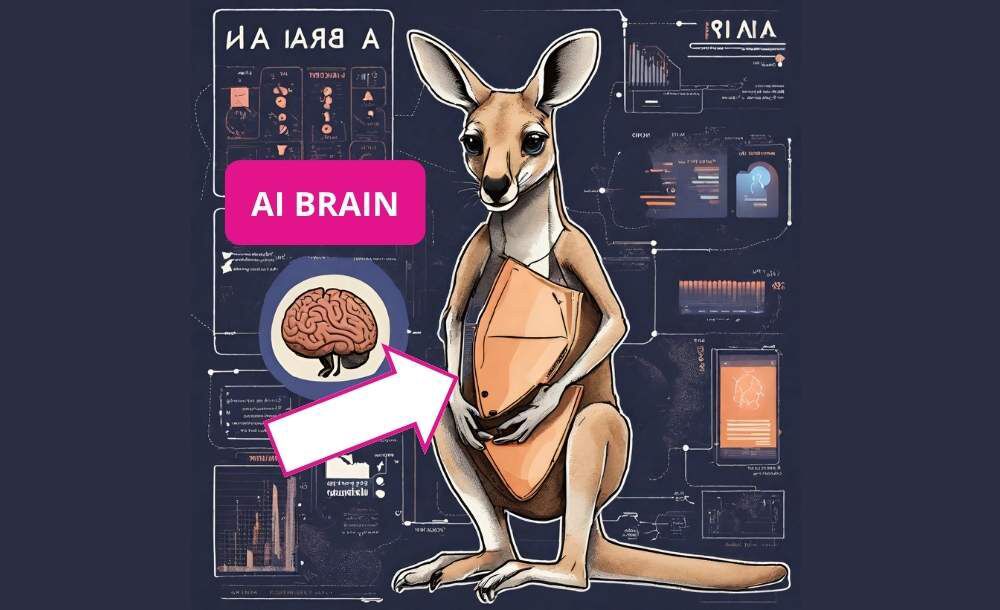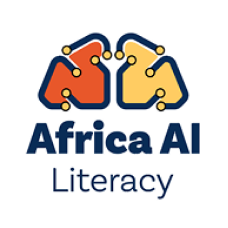Welcome, educators, to the exciting world of Artificial Intelligence (AI)!
As technology continues to evolve, it’s crucial for teachers to grasp the basics of AI to prepare students for the future. Let’s dive into some key concepts in a easy and fun manner.👍
What is AI? 🤔
AI refers to the simulation of human intelligence in machines, enabling them to perform tasks that typically require human intelligence. These tasks include learning, problem-solving, understanding natural language, and more.
Let’s think of AI like a Kangaroo! 🦘️
Teacher Tip – This is also a great way to explain AI to your students with Roo as a friendly kangaroo analogy.🦘️
Imagine AI as Roo, the Kangaroo.
Just like Roo has a pouch to carry its baby, AI systems have a “brain” where they store information and make decisions.
This brain is filled with data and algorithms, much like Roo’s pouch holds her joey.

How Does AI Work?
AI works by analyzing large amounts of data to identify patterns and make predictions or decisions. It learns from this data to improve its performance over time, similar to how kangaroos learn from their environments to improve their survival skills.
Teacher Tip – You can also compare how AI works to how students learn from their mistakes to improve their grades.

Why Should Teachers Care About AI?
Understanding AI allows teachers to integrate technology effectively into their classrooms, enabling students to develop essential digital literacy skills. By implementing AI principles into your curriculum, you can prepare students with the necessary tools to navigate and excel in a future heavily influenced by AI technology.
I’ve broken down the core AI benefits to make it easier to understand.✅
Benefits to Teachers:
- Huge Time Saver: AI tools automate administrative tasks like grading and organizing materials, freeing up teachers to focus more on lesson planning and student engagement.
- Efficient Assessment: AI-driven assessment tools provide quick and accurate feedback, reducing the time spent on grading and allowing teachers to identify areas where students may need additional support.
- Data-Driven Insights: AI analytics offer valuable data on student performance and learning trends, enabling teachers to make informed decisions about instructional strategies and interventions.
- Enhanced Content Creation: AI assists teachers in creating engaging learning materials, saving time on content development and allowing for more innovative and interactive lessons.
- Elimination of Bias: AI algorithms help mitigate unconscious biases in grading and decision-making, promoting fairness and equity in assessments and classroom interactions.
Benefits to Students:
- Personalized Learning: AI analyzes students’ learning styles and preferences to provide personalized recommendations, adaptive learning pathways, and targeted support, catering to individual needs and maximizing learning outcomes.
- Efficient Feedback: AI-powered assessment tools offer instant feedback on assignments and quizzes, enabling students to identify areas of improvement and make progress more quickly.
- Accessibility and Inclusion: AI technologies provide support for students with disabilities, offering alternative formats, adaptive interfaces, and assistive technologies to ensure equal access to educational opportunities.
- Language Support: AI-driven language learning platforms and translation tools facilitate language acquisition and communication, breaking down language barriers and supporting students from diverse linguistic backgrounds.
- Virtual Teaching Assistants: AI chatbots and virtual assistants offer 24/7 support to students, answering questions and providing guidance outside of class hours, enhancing learning continuity and accessibility.
Benefits to Parents:
- Improved Communication: AI facilitates real-time updates on a child’s academic progress, behavior, and attendance, fostering better communication between parents and teachers.
- Personalized Insights: AI analytics offer parents personalized insights into their child’s learning strengths, weaknesses, and progress, enabling targeted support and encouragement.
- Access to Resources: AI tools recommend educational resources, tutoring services, and extracurricular activities tailored to each child’s needs and interests, enhancing parental support for their child’s learning.
- Engagement Opportunities: AI-driven platforms facilitate parent-teacher communication, involvement in school activities, and participation in educational initiatives, empowering parents to play an active role in their child’s education journey.
- Enhanced Understanding: AI-generated reports and insights help parents better understand their child’s academic performance and learning needs, enabling them to provide appropriate support and guidance.
- Convenience: AI-enabled platforms offer convenient access to educational information, schedules, and updates, saving parents time and effort in staying informed about their child’s education.
Final Thoughts:
Embracing AI basics opens up a world of possibilities for educators and students alike. Just like Roo hops fearlessly into new adventures, let’s leap into the next section of this AI guide to learn how to integrate AI smoothly into your classroom.
